Ridgecrest Area Reptiles
Here are some photos of Ridgecrest area reptiles that I have accumulated
over the years. There are also some amphibian and habitat photos as well
as my random comments. The photos are extracted from various trip
reports on my main photo website.
This page is not intended to be a complete guide, but as mentioned above,
it's just "what I've got." I have defined the Ridgecrest area to include
everything within a 30-mile radius of town, which includes the Indian
Wells and Searles Valleys, the El Paso, Rand, and various other desert ranges
south of Ridgecrest, the southern Coso and Argus Mountains, the Slate Range,
and some of the southern Sierras.
I have also decided to exclude species that only occur in this area
in the southern Sierras. This removes a number
of interesting species, but keeps the focus on those that occur in the desert
(and I think this page is long enough).
I did make one exception: I included the Northern Pacific Rattlesnake
(Crotalus oreganus oreganus), because rattlesnakes are cool.
For the most part, I have taken the species names from
Gary Nafis's excellent website
California Herps,
where you can find a lot of good information and photographs.
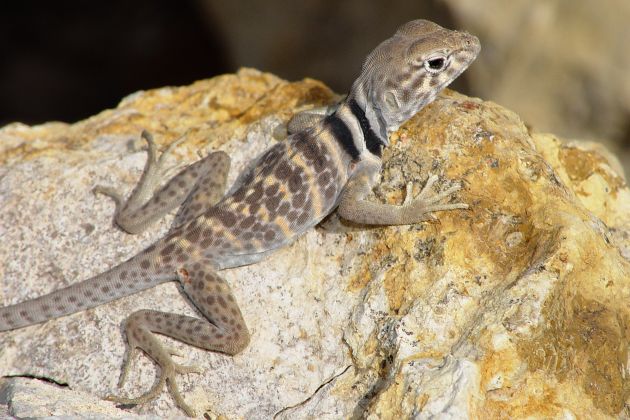
Great Basin Collared Lizard (Crotaphytus bicinctores), August 2003.
This is a young individual.
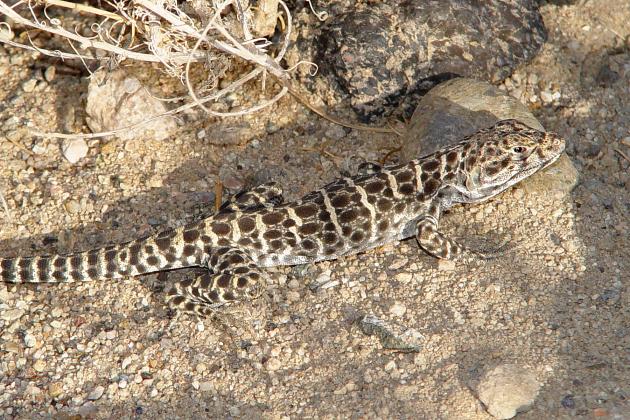
Long-nosed Leopard Lizard (Gambelia wislizenii), August 2003.
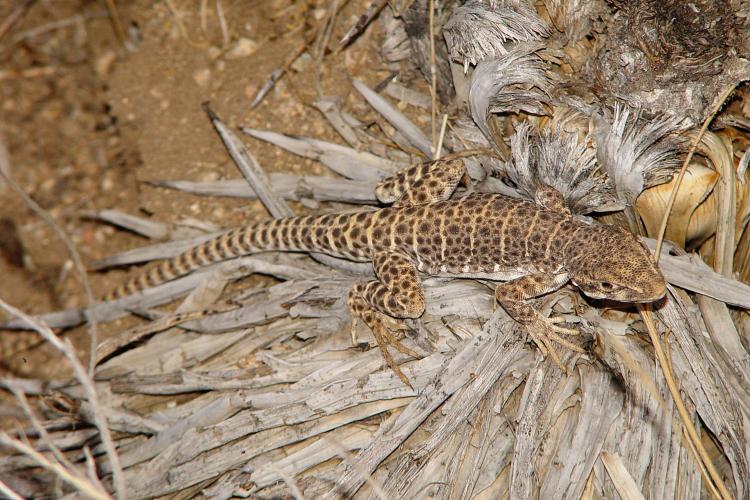
Long-nosed Leopard Lizard (Gambelia wislizenii), June 2004.
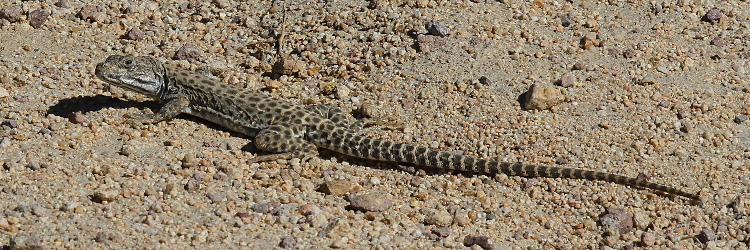
Long-nosed Leopard Lizard (Gambelia wislizenii), June 2014.
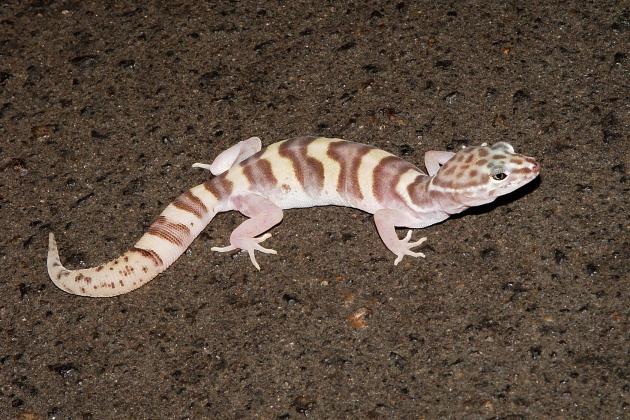
Desert Banded Gecko (Coleonyx variegatus variegatus), August 2003.
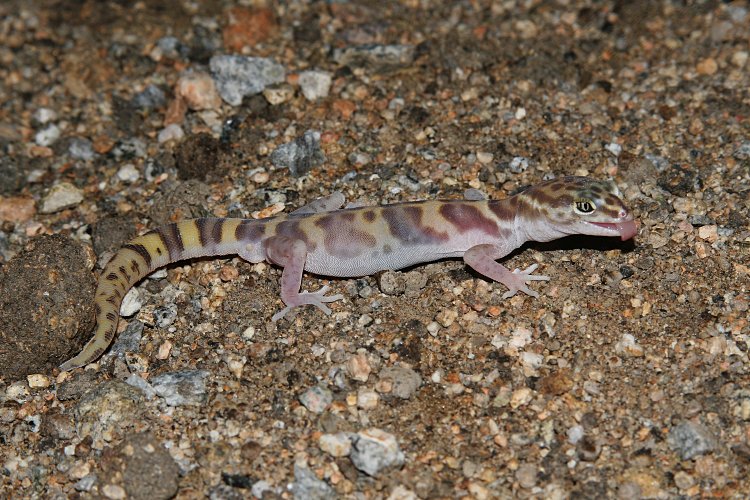
Desert Banded Gecko (Coleonyx variegatus variegatus), July 2007.
Licking its chops.
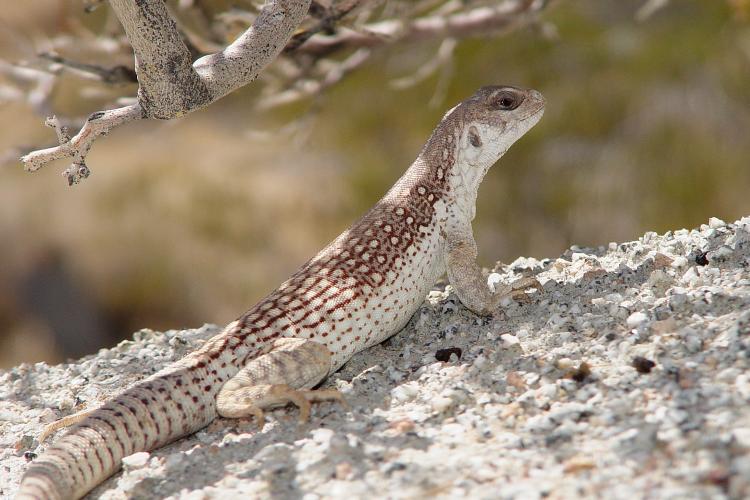
Desert Iguana (Dipsosaurus dorsalis), July 2004.
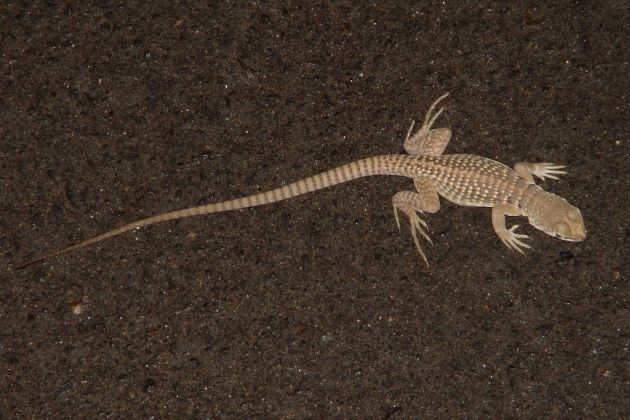
Desert Iguana (Dipsosaurus dorsalis), August 2003.
This is a hatchling, found on a road at night.
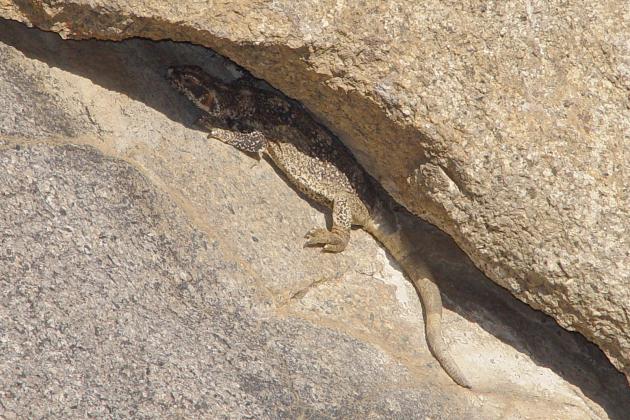
Chuckwalla (Sauromalus ater), August 2003.
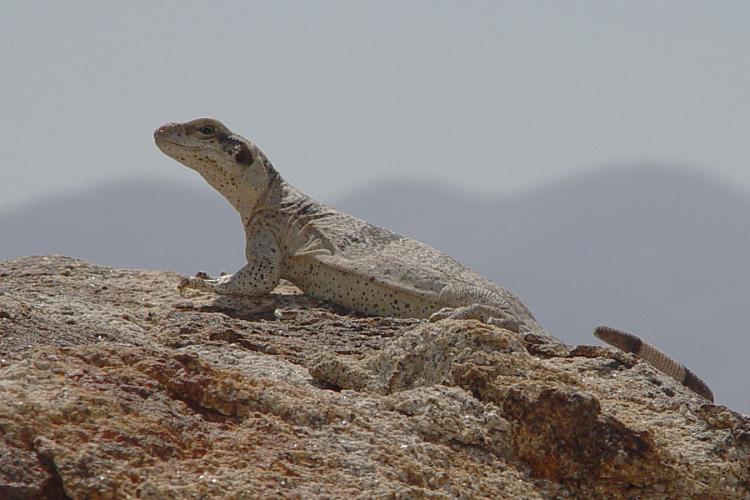
Chuckwalla (Sauromalus ater), June 2004.
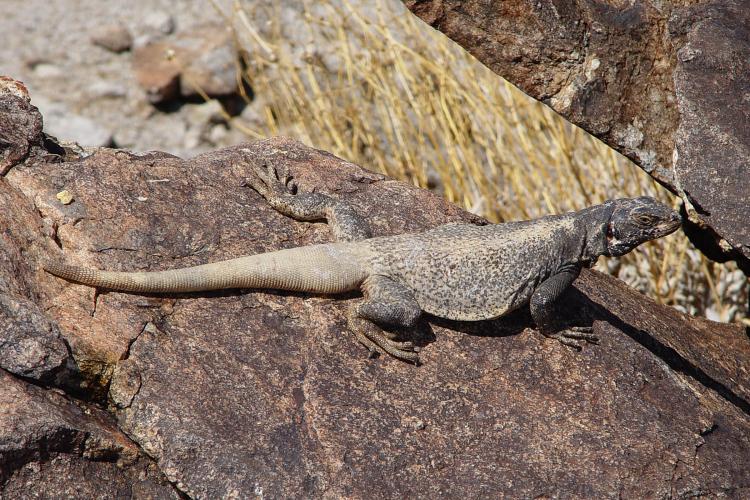
Chuckwalla (Sauromalus ater), June 2004.
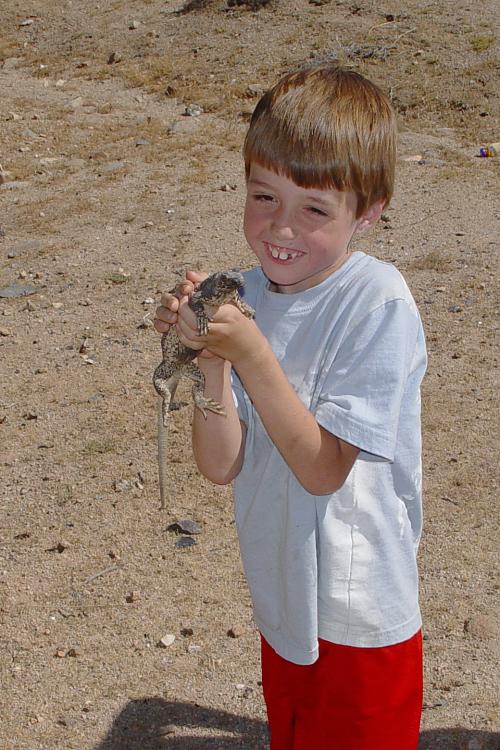
Our son Ryan with a Chuckwalla, June 2004.
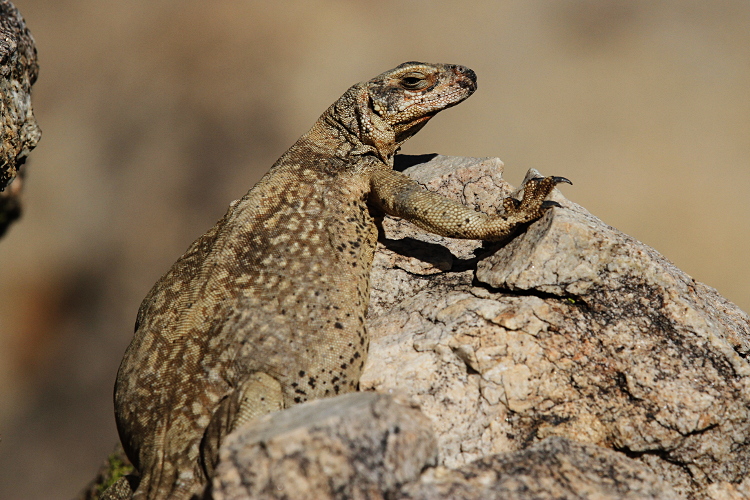
Chuckwalla (Sauromalus ater), June 2014. This is a female.
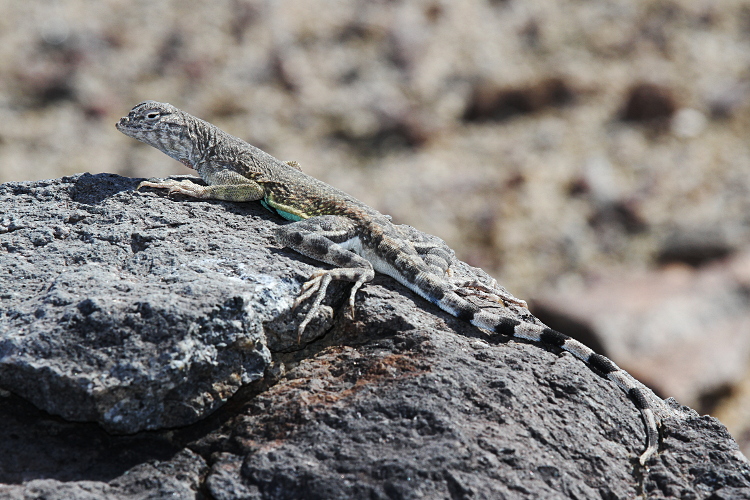
Zebra-tailed Lizard (Callisaurus draconoides), June 2014.
This is a male.
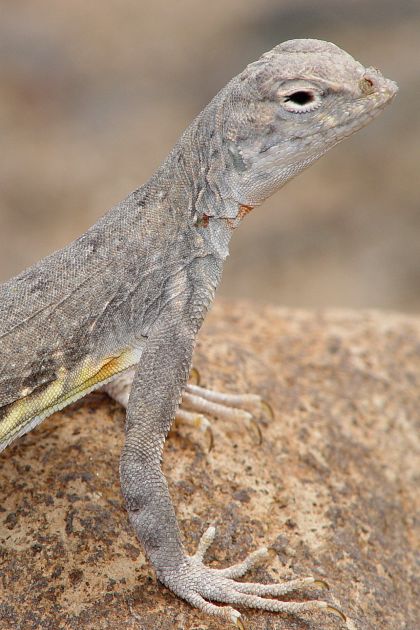
Zebra-tailed Lizard (Callisaurus draconoides), August 2003.
This is a female.
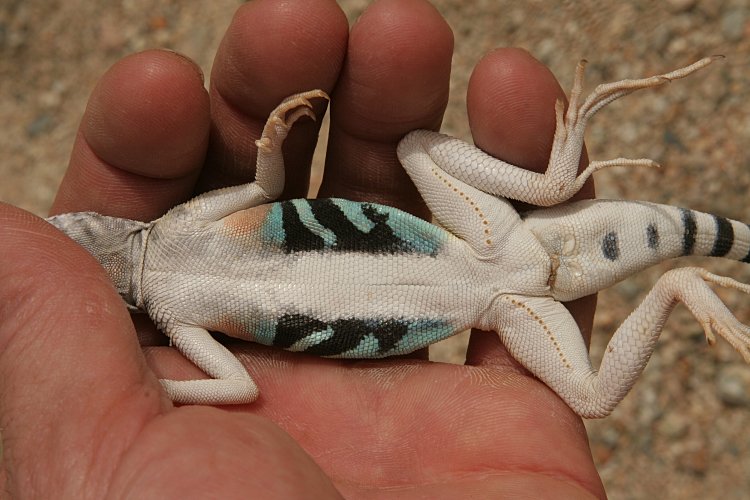
Zebra-tailed Lizard (Callisaurus draconoides), May 2010.
This male has three black bars on its belly, which is a little unusual.
They normally only have two black bars.
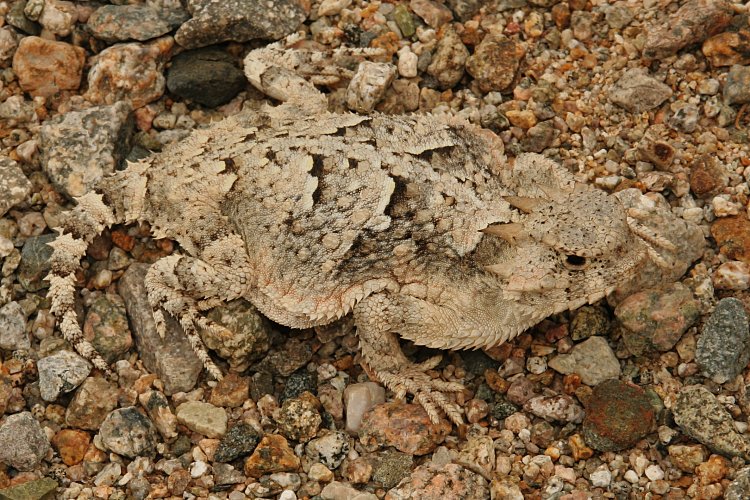
Desert Horned Lizard (Phrynosoma platyrhinos), May 2010.
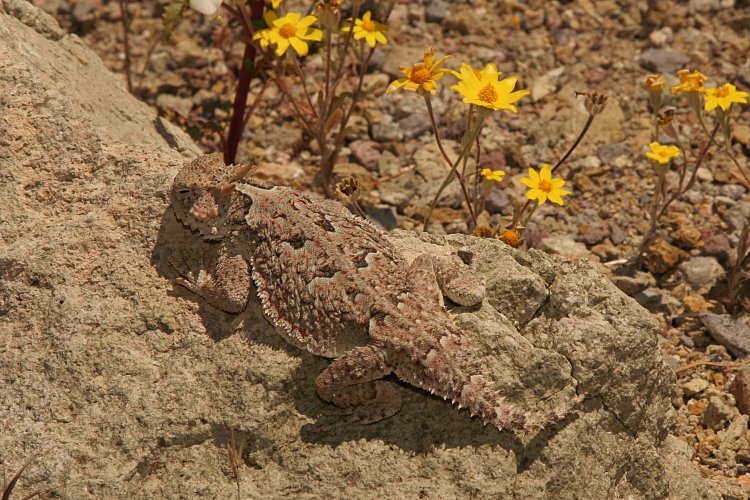
Desert Horned Lizard (Phrynosoma platyrhinos), May 2011.
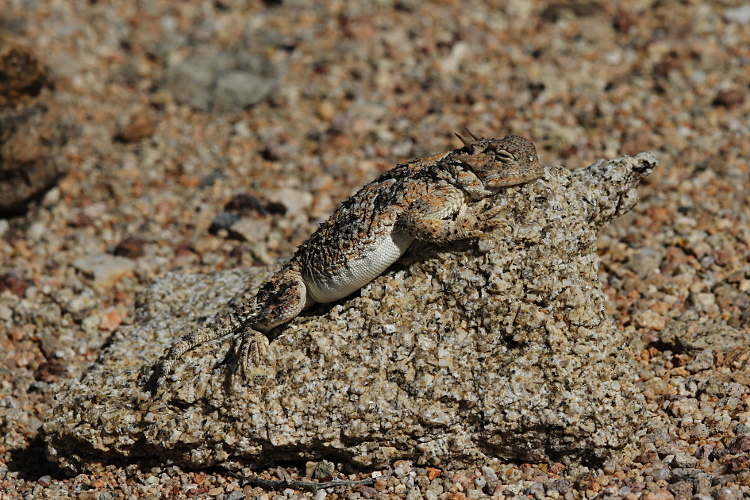
Desert Horned Lizard (Phrynosoma platyrhinos), June 2014.
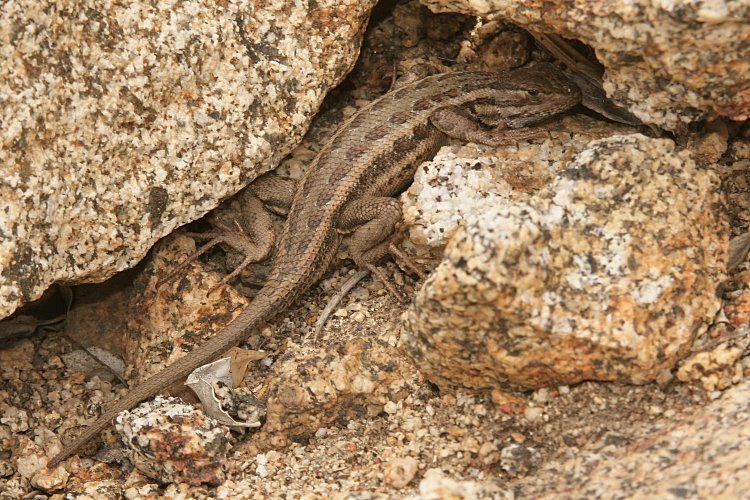
Northern Sagebrush Lizard (Sceloporus graciosus graciosus), May 2010.
This animal is from the east slope of Owens Peak, near the summit.
In the Ridgecrest area, they should also be in the upper reaches of
the Argus Mountains -- I'd like to confirm that someday.
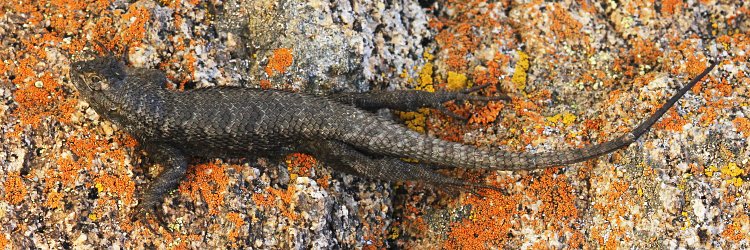
Great Basin Fence Lizard (Sceloporus occidentalis longipes), June 2012.
This species is present at higher elevations, including the Argus Mountains,
Cosos, and Sierras. This animal is from the northern Cosos, a bit north of
what I am calling the Ridgecrest area.
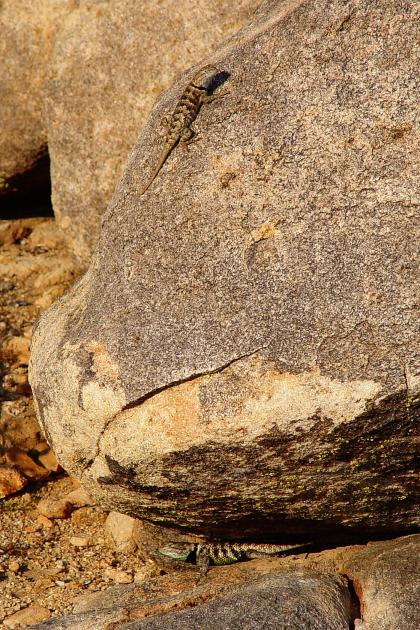
A pair of Yellow-backed Spiny Lizards (Sceloporus uniformis),
August 2003.
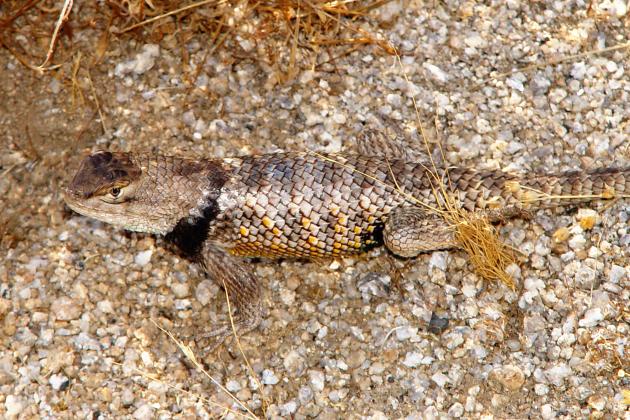
Yellow-backed Spiny Lizard (Sceloporus uniformis), August 2003.
This is a large male.
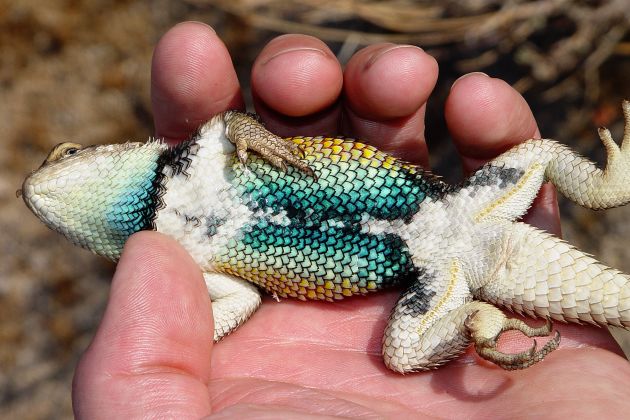
Ventral view of the previous lizard.
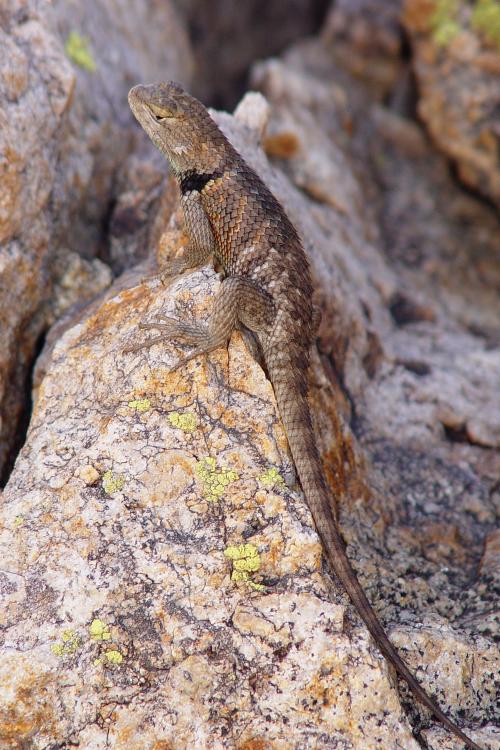
Yellow-backed Spiny Lizard (Sceloporus uniformis), July 2004.
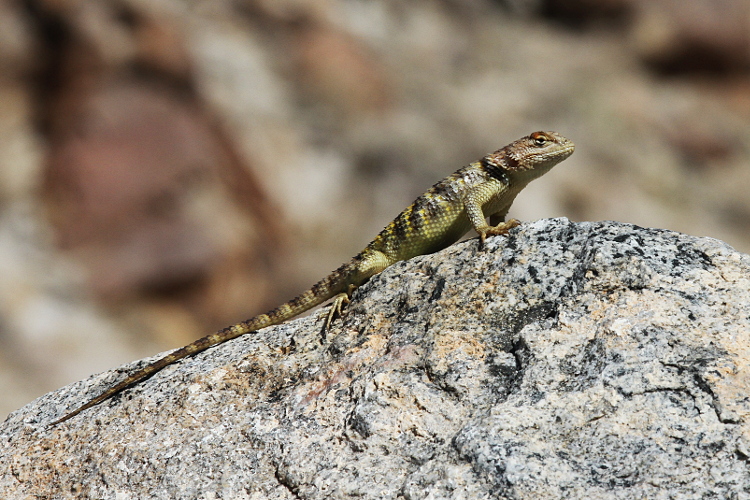
Yellow-backed Spiny Lizard (Sceloporus uniformis), June 2014.
This is a female.
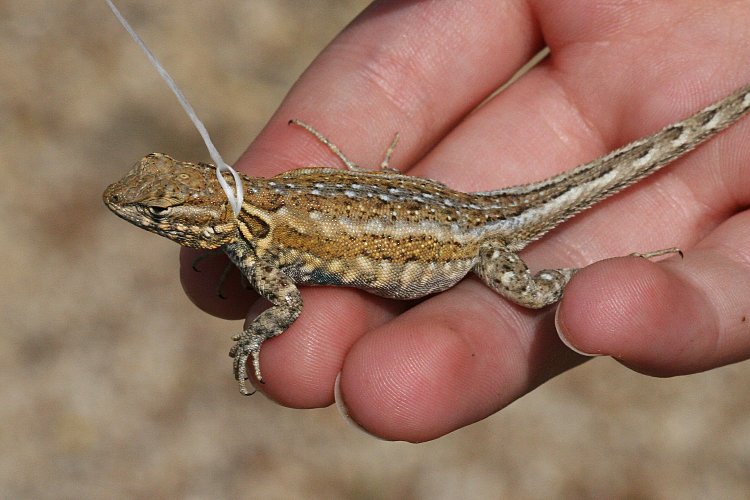
Side-blotched Lizard (Uta stansburiana), March 2006.
This is a gravid female.
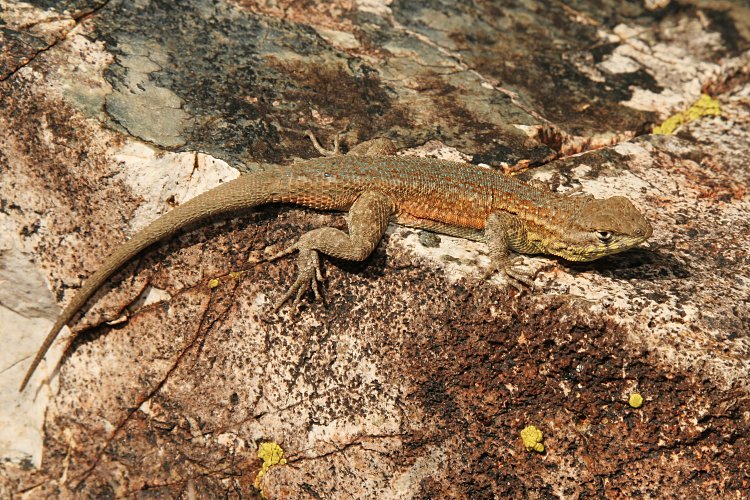
Side-blotched Lizard (Uta stansburiana), April 2011.
This is a male.
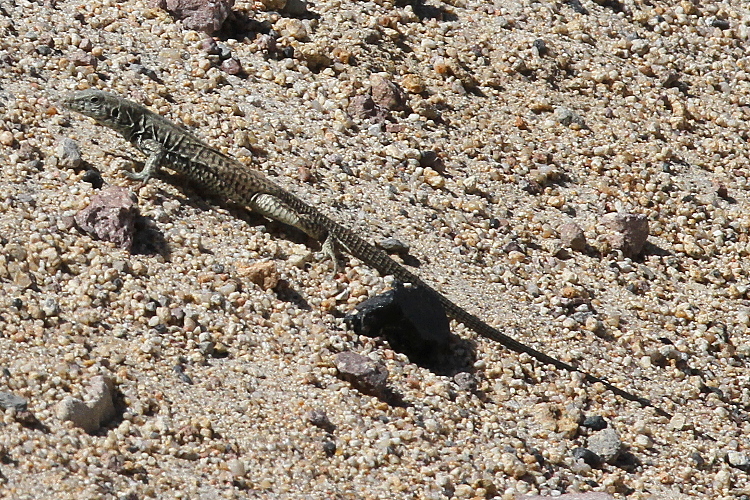
Great Basin Whiptail (Aspidoscelis tigris tigris), June 2014.
I need to get a better photo of this species.
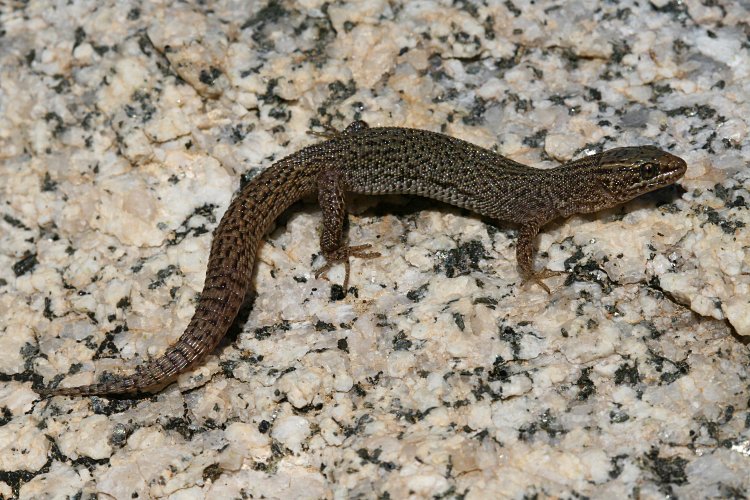
Desert Night Lizard (Xantusia vigilis), March 2006.
This species can be found reliably under dead Joshua Tree limbs that
occur on mid-elevation slopes around the Indian Wells Valley.
However, they can also be found under rocks and other cover objects.
When I was a kid in the 1970s, there was a place in Ridgecrest
near the intersection of Sunland and Upjohn where a bunch of cardboard
had been dumped. It was several layers thick, and over the years it had
become partially covered with dirt and plant debris.
My friends and I discovered that these cardboard piles supported a large
colony of night lizards. Over the years, the cardboard eventually
decayed away. The site has now been replaced by a city park.
I thus suspect they occur throughout the valley.
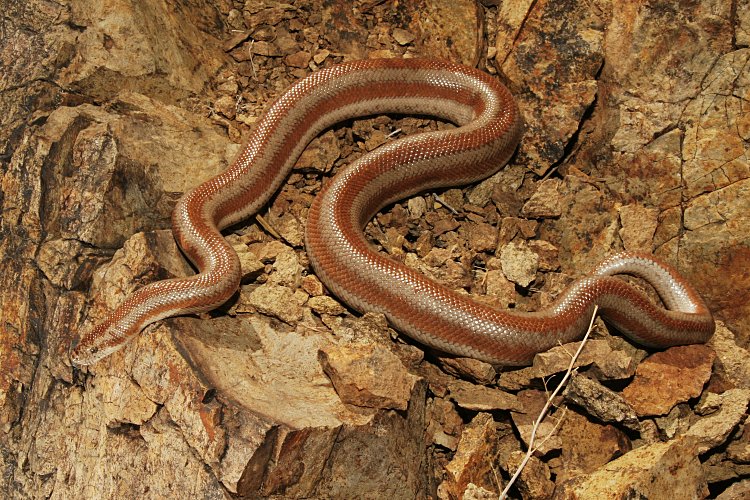
Rosy Boa (Lichanura trivirgata), May 2011.
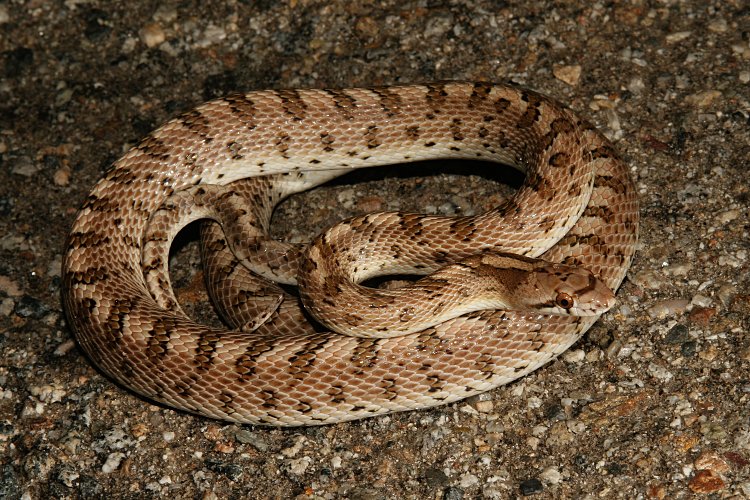
Mojave Glossy Snake (Arizona elegans candida), May 2010.
One of the most common snakes to see on the road at night.
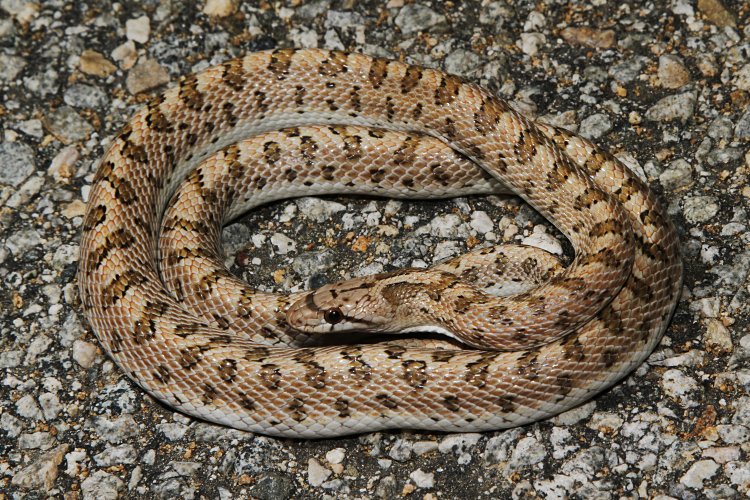
Mojave Glossy Snake (Arizona elegans candida), June 2011.
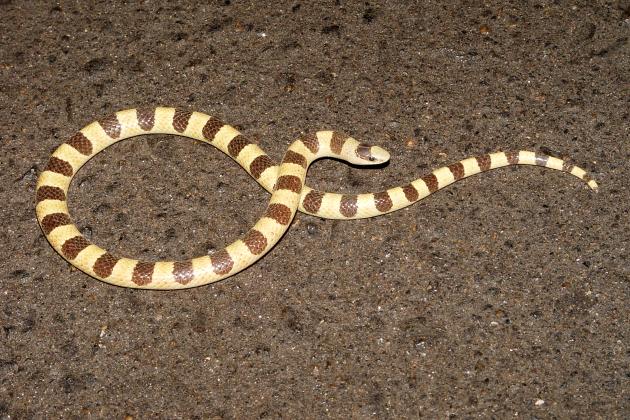
Western Shovel-nosed Snake (Chionactis occipitalis), August 2003.
One of the most common snakes to see on the road at night.
The Ridgecrest area is assigned to the occipitalis subspecies,
the Mojave Shovel-nosed Snake. The snakes here usually have just a hint of a
red or brown band in the center of the cream-colored bands.
The examples that I have seen from the southern Panamint Valley,
where one is getting close to the talpina subspecies,
look about the same to me.
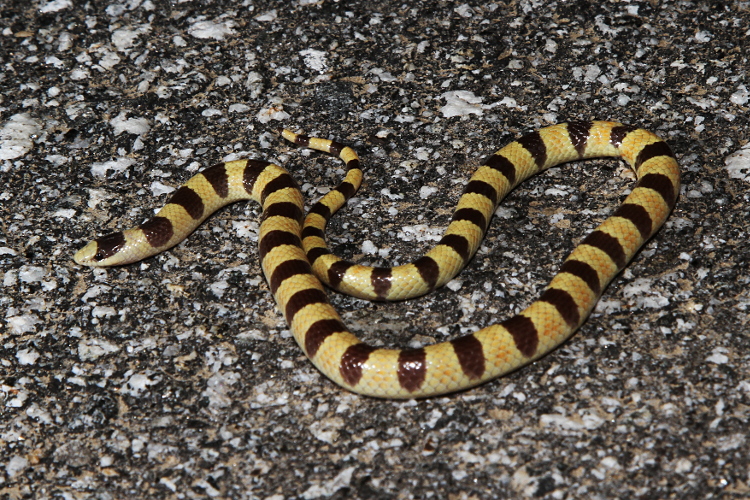
Western Shovel-nosed Snake (Chionactis occipitalis), June 2014.
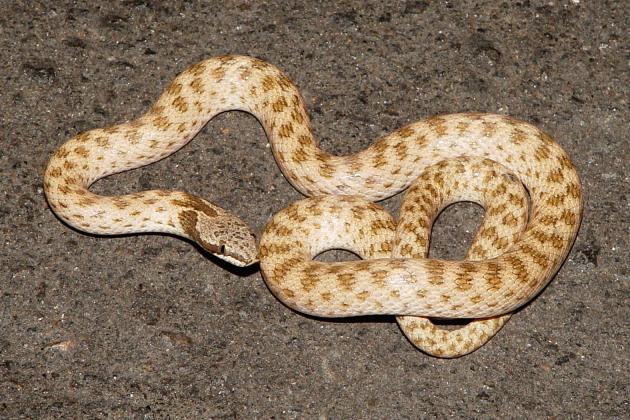
Northern Desert Nightsnake (Hypsiglena chlorophaea deserticola),
August 2003.
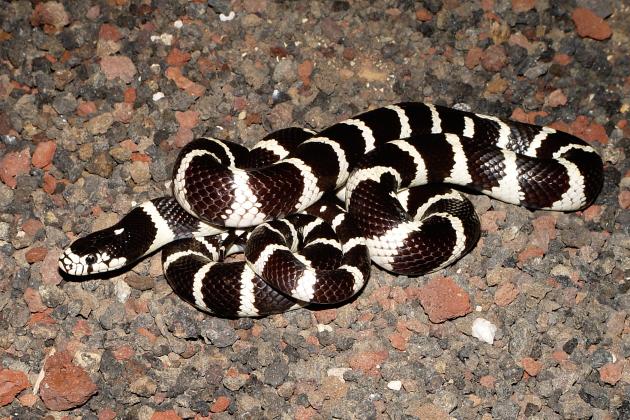
California Kingsnake (Lampropeltis californiae), August 2003.
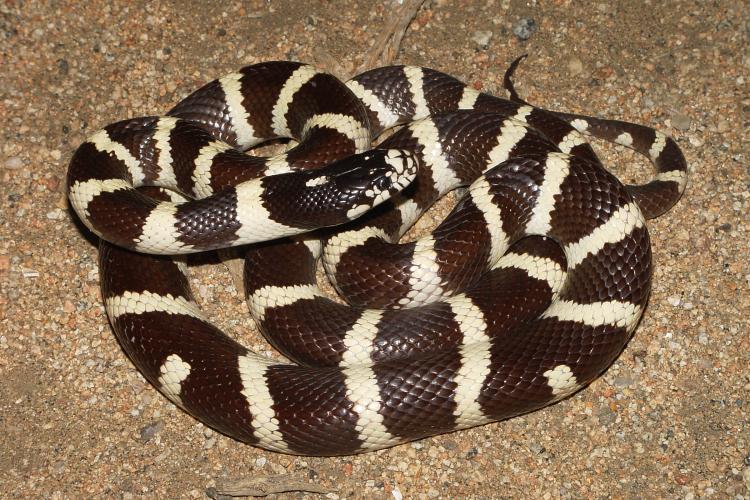
California Kingsnake (Lampropeltis californiae), June 2004.
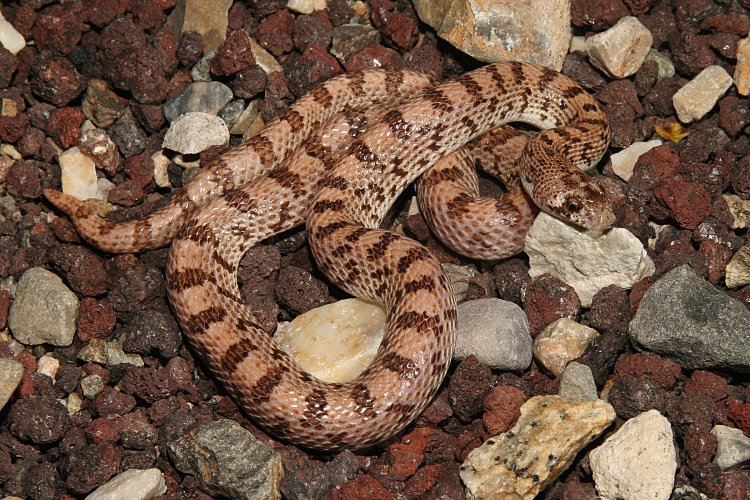
Spotted Leaf-nosed Snake (Phyllorhynchus decurtatus), May 2010.
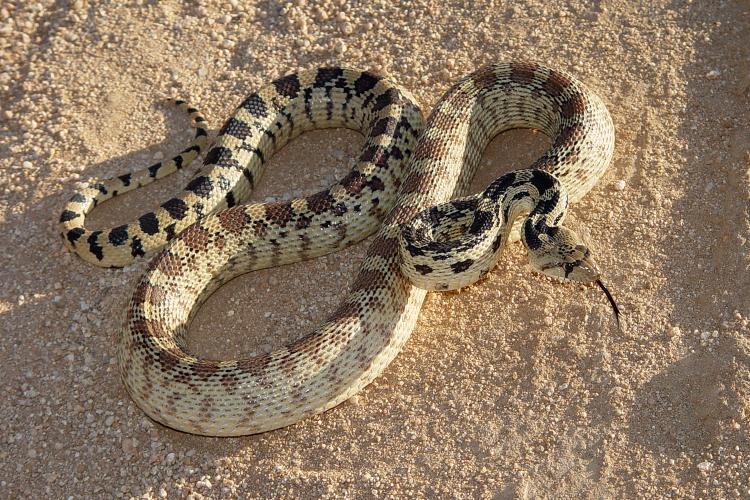
Great Basin Gopher Snake (Pituophis catenifer deserticola),
June 2004. A large adult.
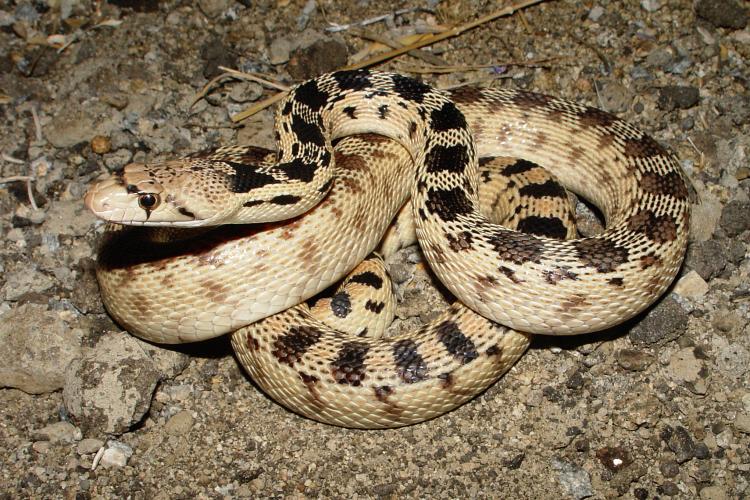
Great Basin Gopher Snake (Pituophis catenifer deserticola),
June 2004. A medium-sized individual.
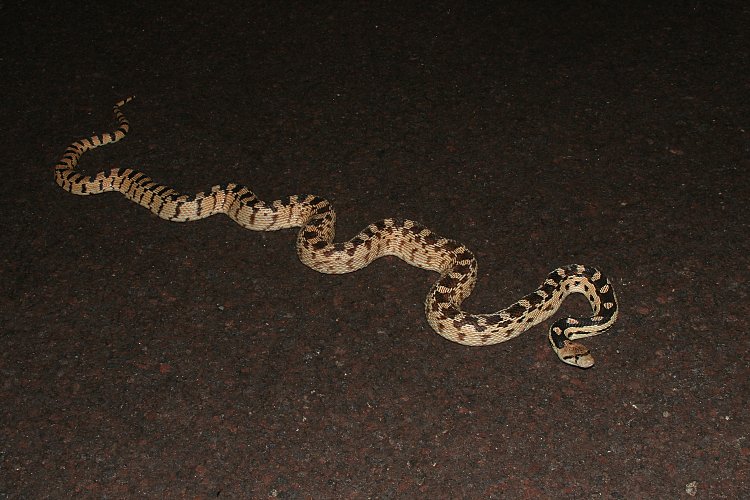
Great Basin Gopher Snake (Pituophis catenifer deserticola),
July 2007. A large adult on a road.
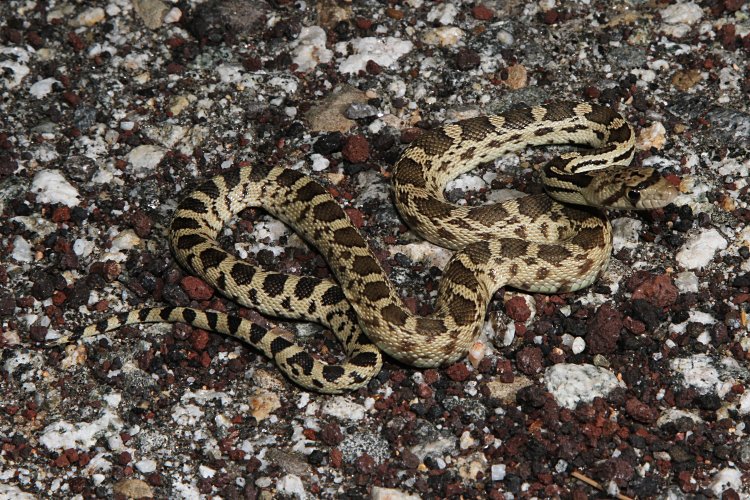
Great Basin Gopher Snake (Pituophis catenifer deserticola),
June 2012. A juvenile.
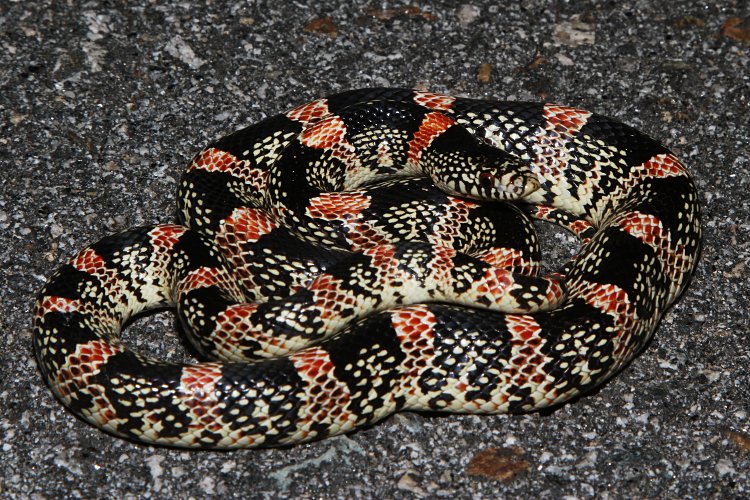
Long-nosed Snake (Rhinocheilus lecontei), June 2012.
One of the most common snakes to see on the road at night.
The number of blotches and amount of red in the pattern is highly variable.
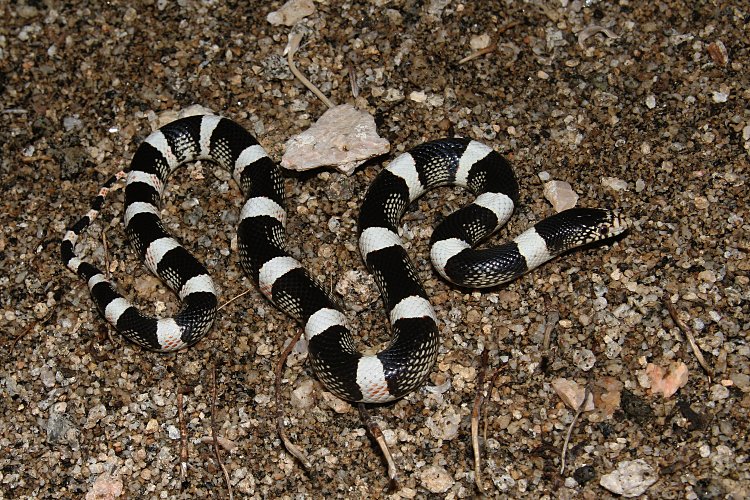
Long-nosed Snake (Rhinocheilus lecontei), July 2007.
This individual is an example of the clarus phase, which has little
red in the pattern and a reduced number of blotches.
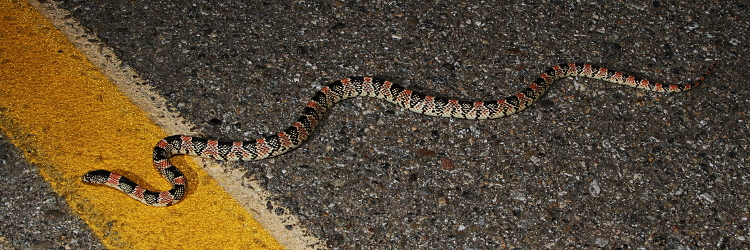
A Long-nosed Snake (Rhinocheilus lecontei), June 2014.
This one has a large number of blotches.
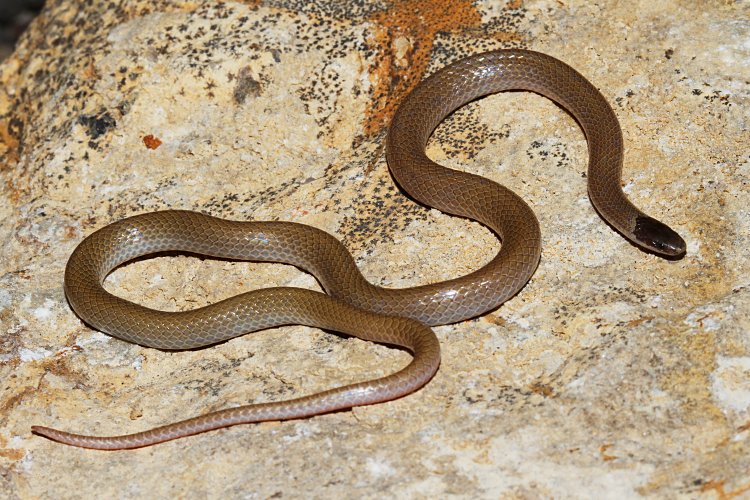
Smith's Black-headed Snake (Tantilla hobartsmithi), May 2012.
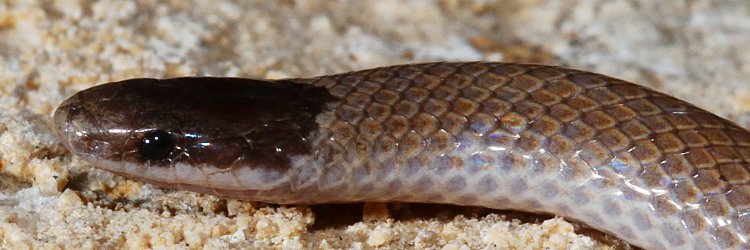
Another look at the snake in the previous photo.
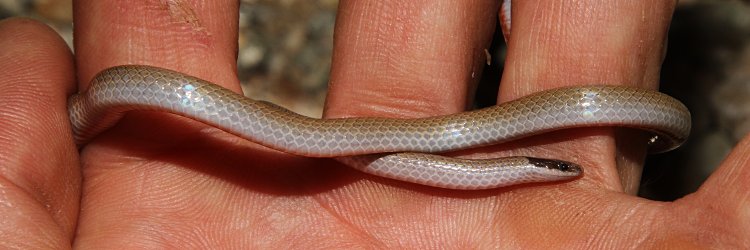
Another look at the snake in the previous photo. Note how flat its head is.
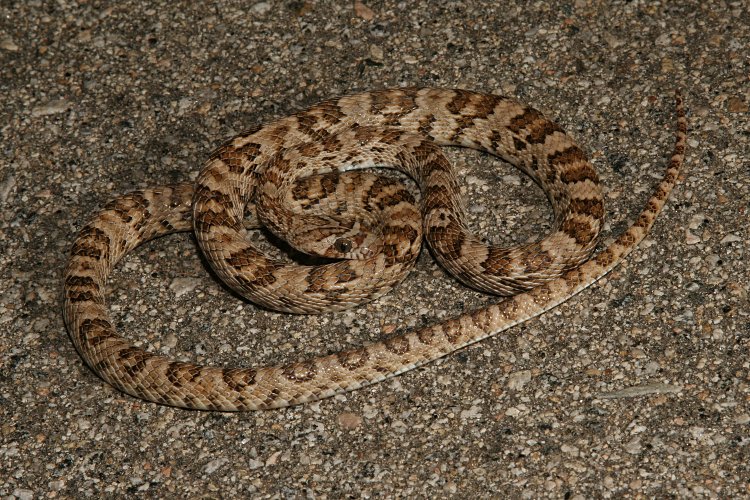
California Lyresnake (Trimorphodon lyrophanes), May 2010.
This snake had been wounded by a car.
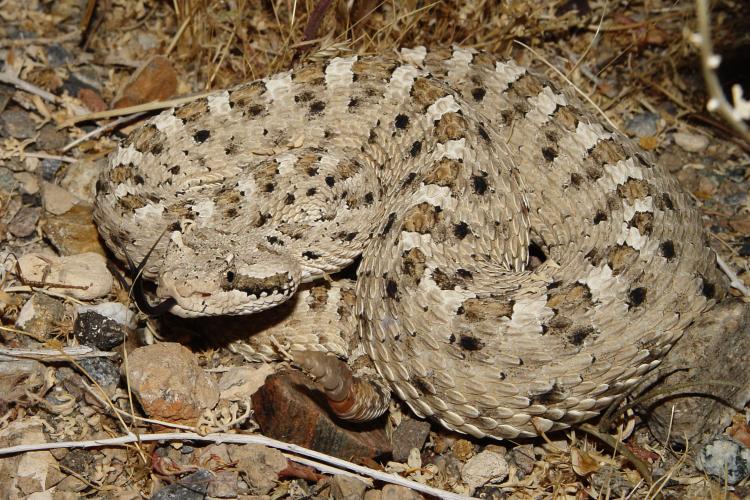
Sidewinder (Crotalus cerastes), June 2004.
One of the most common snakes to see on the road at night.
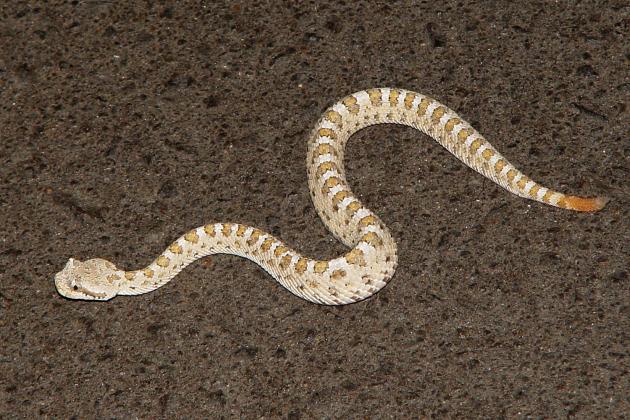
Sidewinder (Crotalus cerastes), August 2003. This is a newborn
with an orange tail.
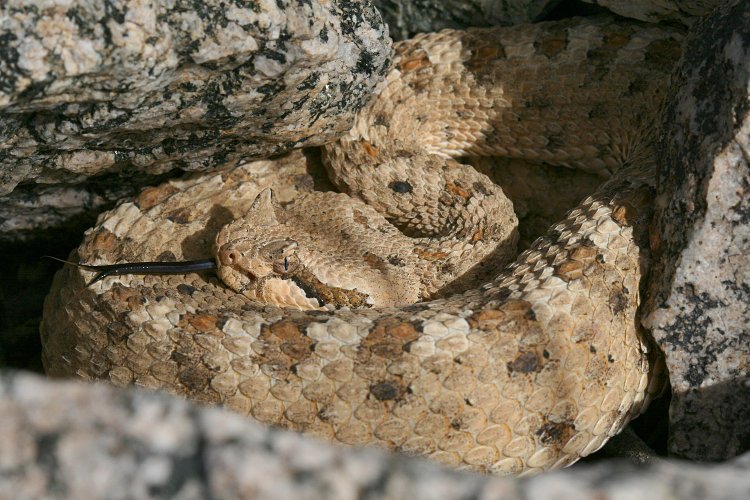
Sidewinder (Crotalus cerastes), 24 March 2006.
Conditions must have been just right for observing basking sidewinders
this day. This photo, and the following three, were taken that day
in the rocky hills south of Ridgecrest. All are shown as found.
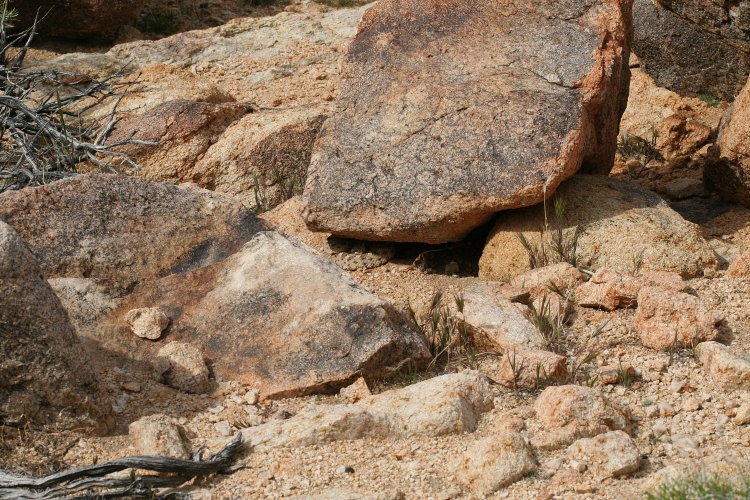
Sidewinder (Crotalus cerastes), 24 March 2006.
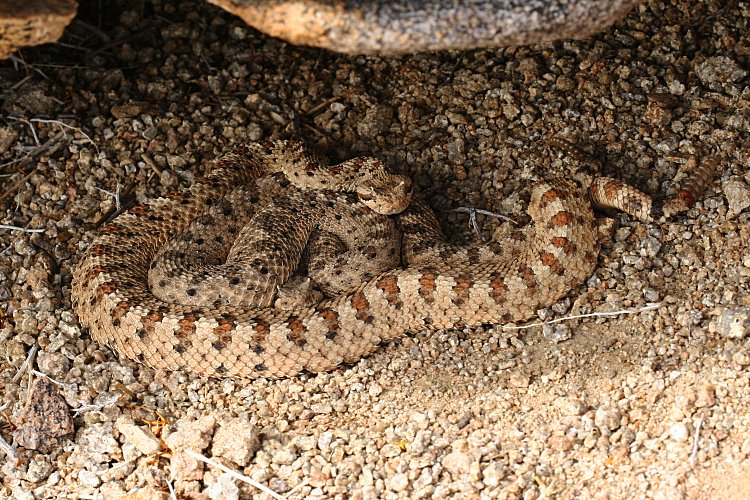
Sidewinders (Crotalus cerastes), 24 March 2006.
A pair mating in the shade of a rock.
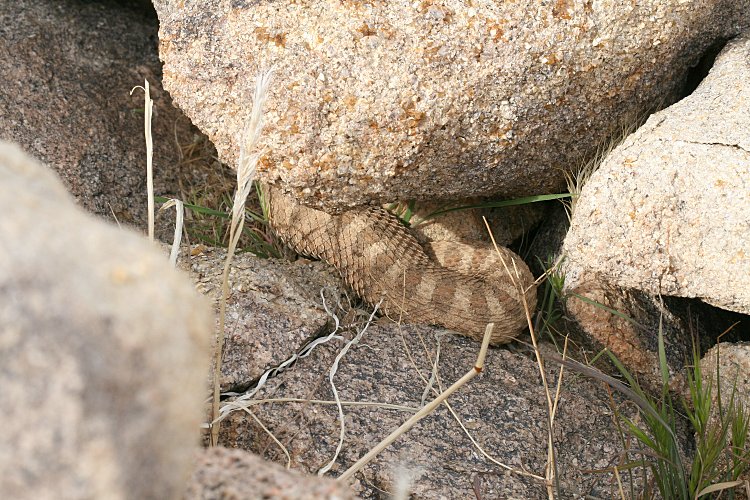
Sidewinder (Crotalus cerastes), 24 March 2006.
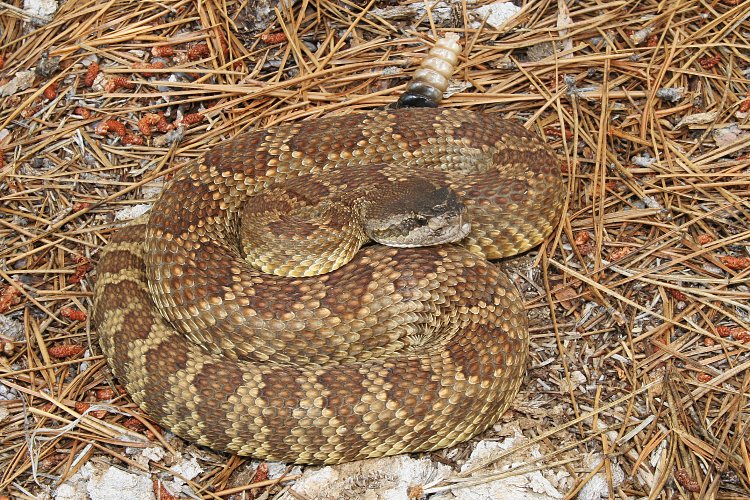
Northern Pacific Rattlesnake (Crotalus oreganus oreganus), August 2008.
In the Ridgecrest area, this species only occurs in the Sierras and on
their slopes.
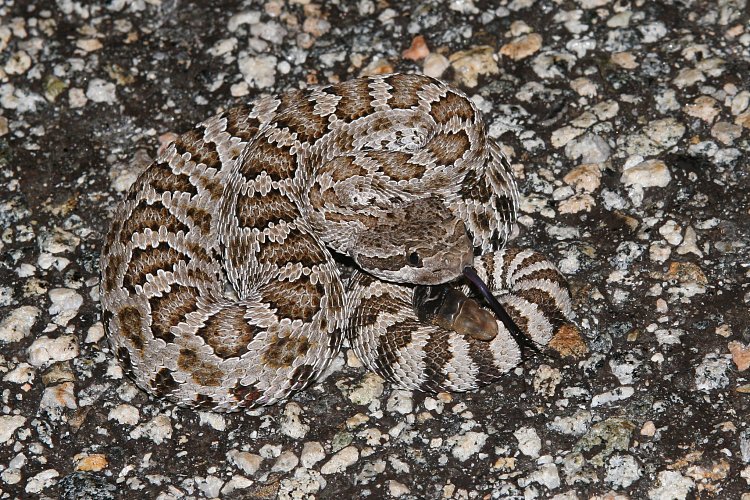
Northern Pacific Rattlesnake (Crotalus oreganus oreganus), July 2007.
A juvenile.
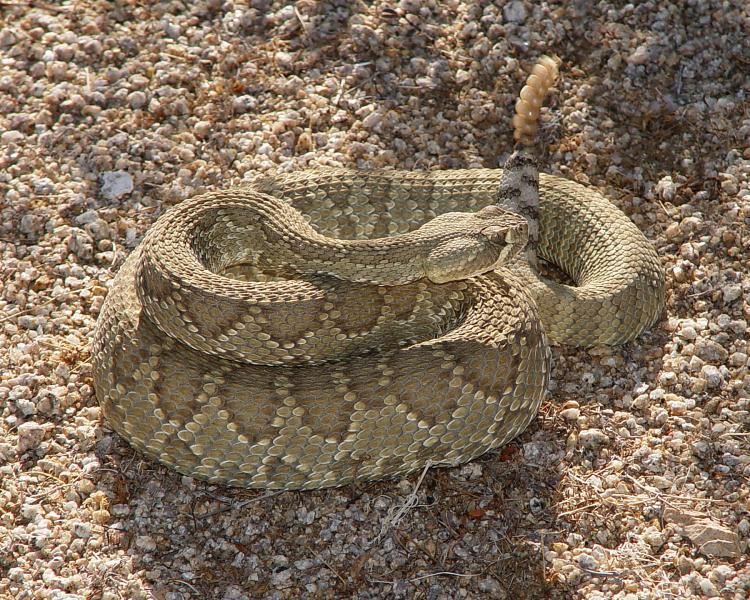
Mojave Rattlesnake (Crotalus scutulatus), June 2004. A large adult.
This species reaches its northern limit in the Ridgecrest area.
I have only seen them south of town, but they do apparently occur
a little bit farther north in some areas.
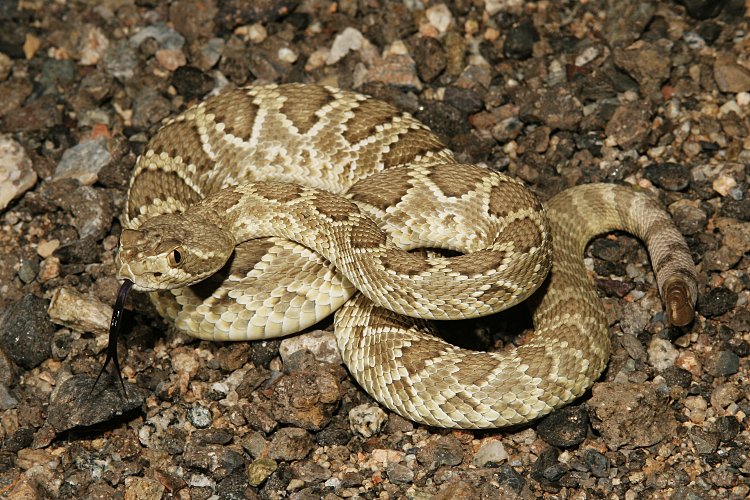
Mojave Rattlesnake (Crotalus scutulatus), May 2010. A subadult.
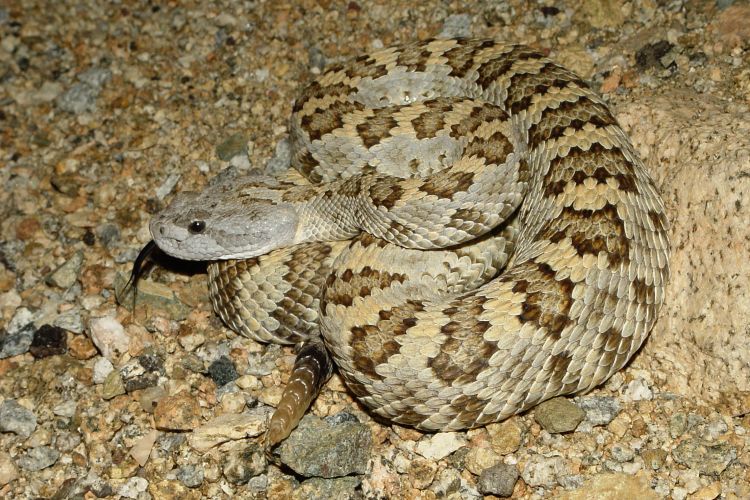
Panamint Rattlesnake (Crotalus stephensi), August 2005.
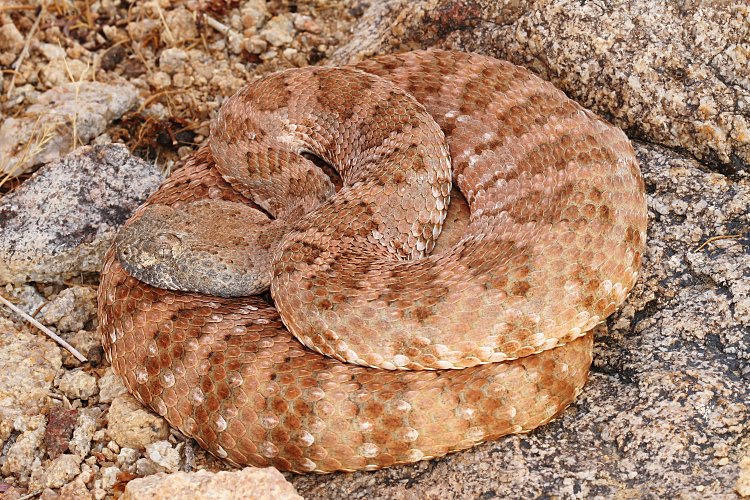
Panamint Rattlesnake (Crotalus stephensi), August 2008.
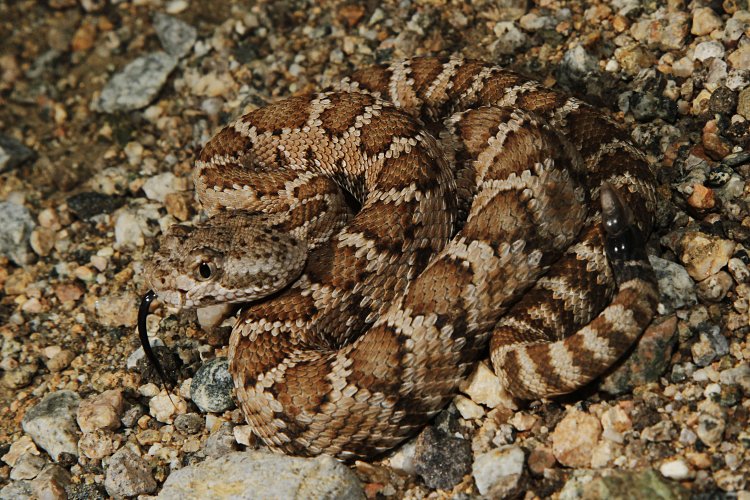
Panamint Rattlesnake (Crotalus stephensi), June 2012. A juvenile.
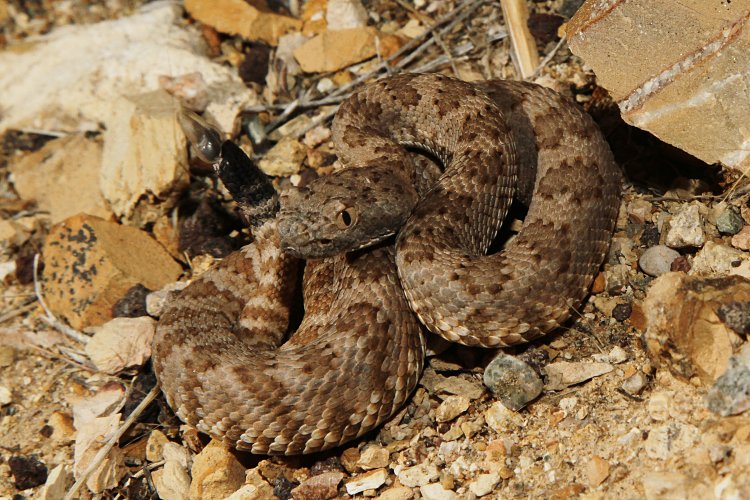
Panamint Rattlesnake (Crotalus stephensi), June 2012. Another juvenile.
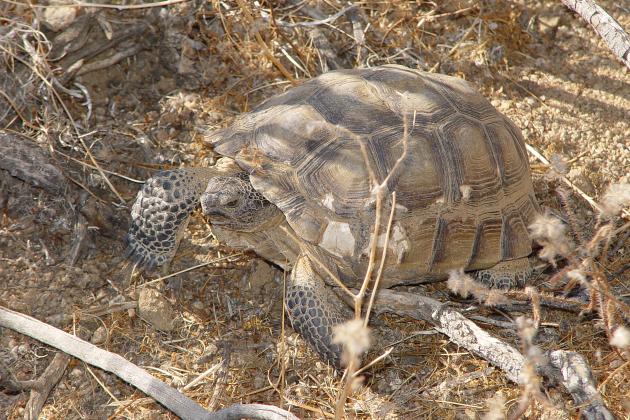
Mojave Desert Tortoise (Gopherus agassizii), August 2003.
This species also reaches is northern limit in the Ridgecrest area.
I have only seen them south of town. They do apparently make it into
Inyo County a little bit.
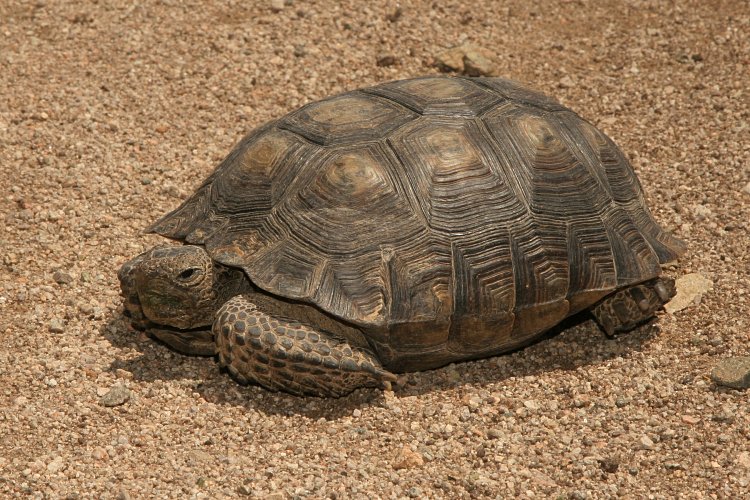
Mojave Desert Tortoise (Gopherus agassizii), April 2011.
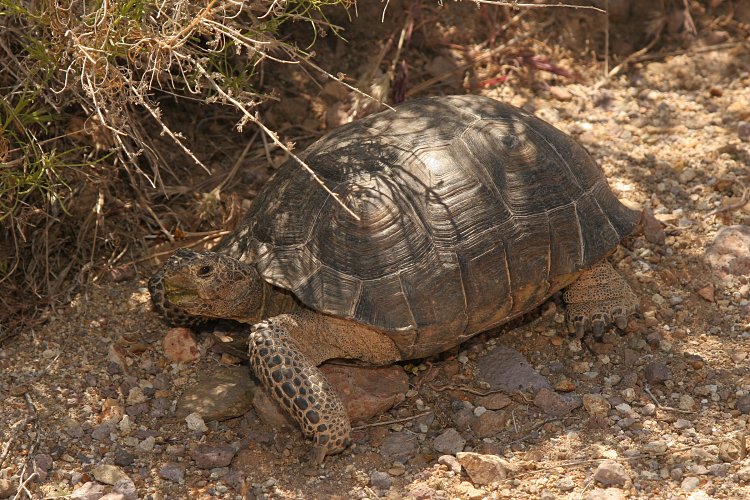
Mojave Desert Tortoise (Gopherus agassizii), May 2011.
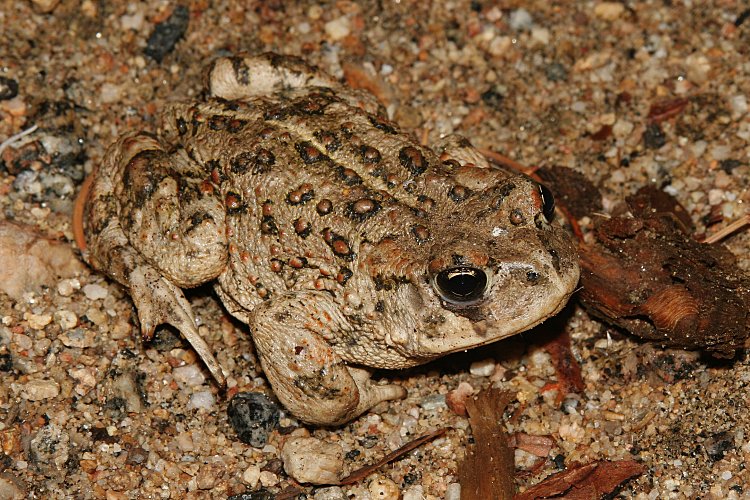
California Toad (Anaxyrus boreas halophilus), July 2007.
In the Ridgecrest area, this species is primarily limited to the
Sierras and their slopes. Back in the 1980s, they would turn
up in the town of Ridgecrest. I do not know if this is still the case.
I am quite sure that they were introduced.
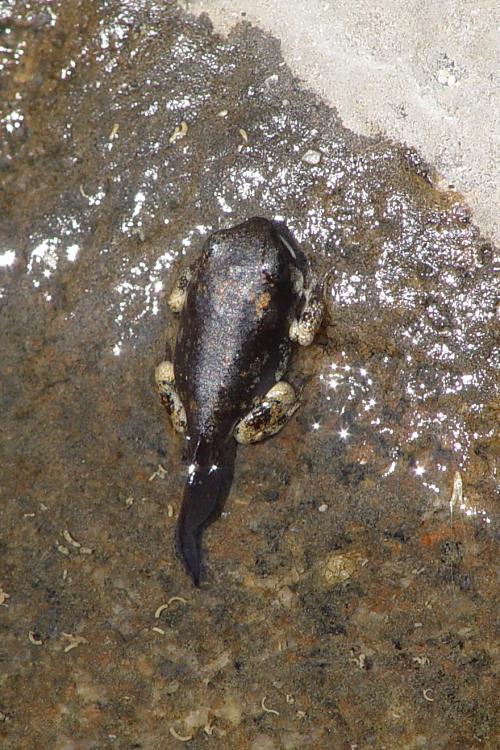
Red-spotted Toad (Anaxyrus punctatus), June 2004. A metamorph.
As far as I know, in the Ridgecrest area this species is limited
to the Argus Mountains.
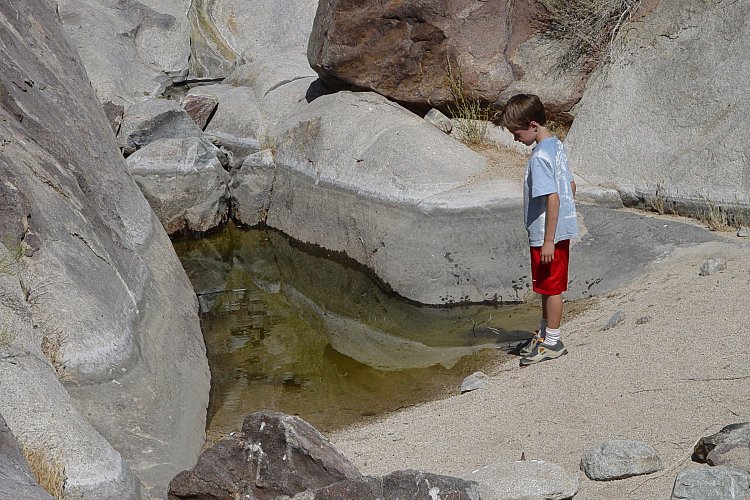
Our son Ryan checking out the Red-spotted Toad tadpoles and metamorphs
in the southern Argus Mountains, June 2004.
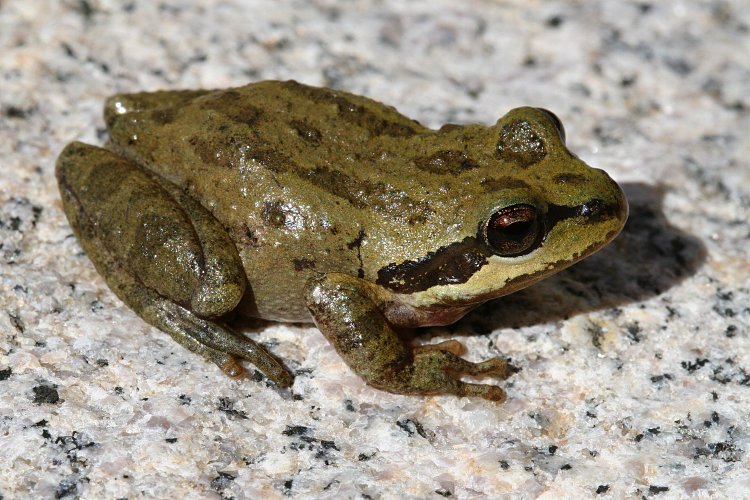
Pacific Treefrog (Hyla regilla), March 2006. In the Ridgecrest area,
this species occurs in the Sierras and the Argus Mountains.
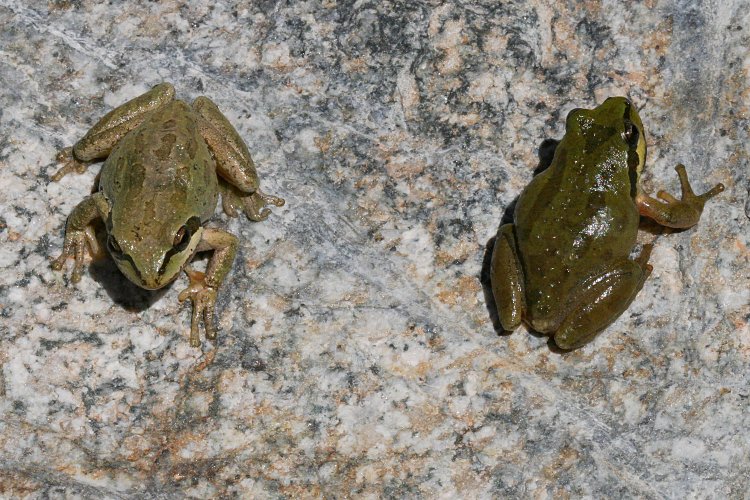
Pacific Treefrogs (Hyla regilla), March 2006.
What is Missing?
There are several species that occur (or may occur) in the Ridgecrest area
that I have not seen and/or photographed (in the area), including:
- Panamint Alligator Lizard (Elgaria panamintina) --
Most sources list this species as occurring in the Coso and Argus ranges.
I would like to see this with my own eyes.
I have seen and photographed this species on the east side of the
Owens Valley.
- Western Long-tailed Brush Lizard
(Urosaurus graciosus graciosus) --
Most range maps I have seen show this species occurring in the Ridgecrest
area, or close to it. I personally have never seen one anywhere near
here. If anyone has seen one within 30 miles of Ridgecrest, I'd like
to hear about it.
- Western Red-tailed Skink
(Plestiodon gilberti rubricaudatus) --
This species occurs at higher elevations in Sierras and presumably the
Coso and Argus Mountains. I have seen (but not photographed) skinks
that are most likely this species on the east slope of Owens Peak and in
the southern Argus Mountains. The latter was a juvenile with a blue tail.
- Red Racer (Masticophis flagellum piceus) --
I have seen many of these over the years in the Indian Wells Valley.
When going through my photos, I was surprised to find that I did not
have any photos of this species from this area.
- Desert Striped Whipsnake (Masticophis taeniatus taeniatus) --
This species occurs in the Kennedy Meadows area, the east slopes of the
Sierras north of Ninemile Canyon, and presumably in the higher elevations
of the Coso and Argus Mountains. As one goes south in the Sierras, this
species is replaced by the California Striped Racer
(Masticophis lateralis lateralis), which I am skipping for
reasons mentioned in the beginning.
I've seen the Desert Striped Whipsnake in the Kennedy Meadows area and to
the north in the Owens Valley.
- Desert Patch-nosed Snake (Salvadora hexalepis hexalepis) --
I've seen a few of these in the Ridgecrest area, although none recently.
It's habits are similar to the Red Racer, but it seems to be less
common in this area.
- Variable Groundsnake (Sonora semiannulata semiannulata) --
This species has been documented from the Randsburg area and the
Argus Mountains. I would like to find one in the Ridgecrest area.
I've seen them elsewhere in California.
- Desert Threadsnake (Leptotyphlops humilis cahuilae) --
I am aware of a couple of records of this species from the Ridgecrest
area. I have only seen this species once, in the desert area of
San Diego County, California.
Additional Photos
I can't resist throwing in a couple of scorpions...
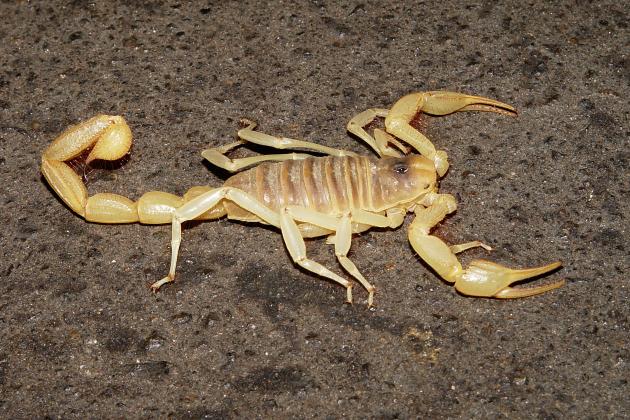
Desert Hairy Scorpion (Hadrurus arizonensis), August 2003.
I'm pretty sure about the species, but I guess there are a few other members
of the genus Hadrurus out there.
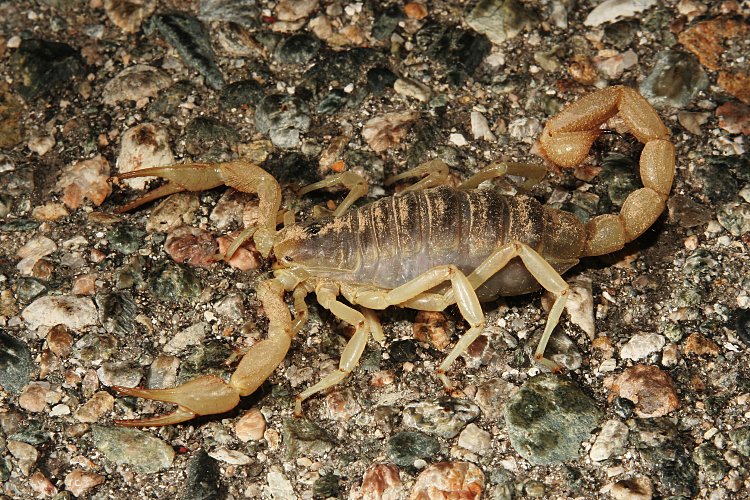
Another scorpion, August 2008. These guys look a lot like geckos when they
are on the road at night.
Ridgecrest Area Landscapes
I will end with some photos taken around the area.
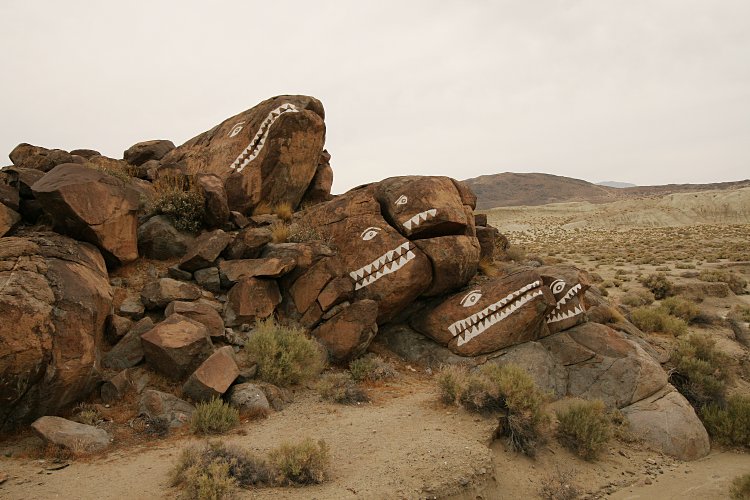
The timeless fish rocks on the way to Trona.
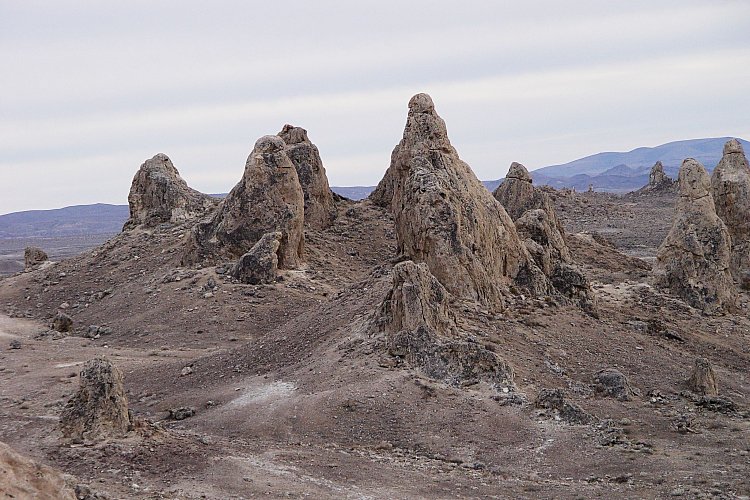
The Trona Pinnacles.
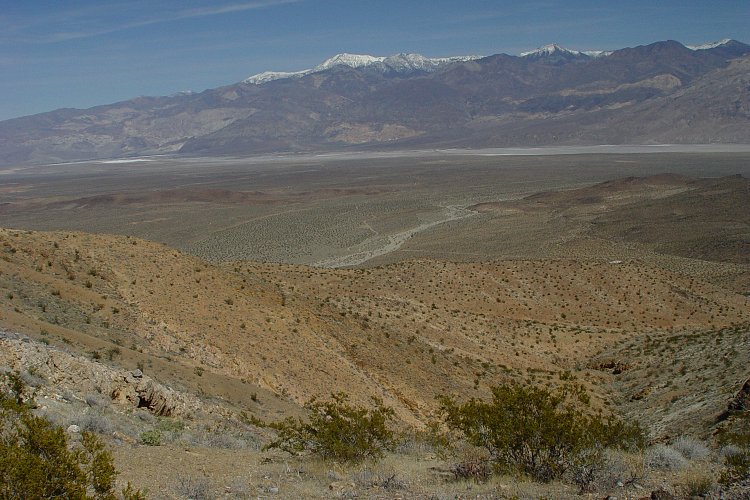
Looking out at the southern Panamint Valley, Surprise Canyon,
and Telescope Peak.
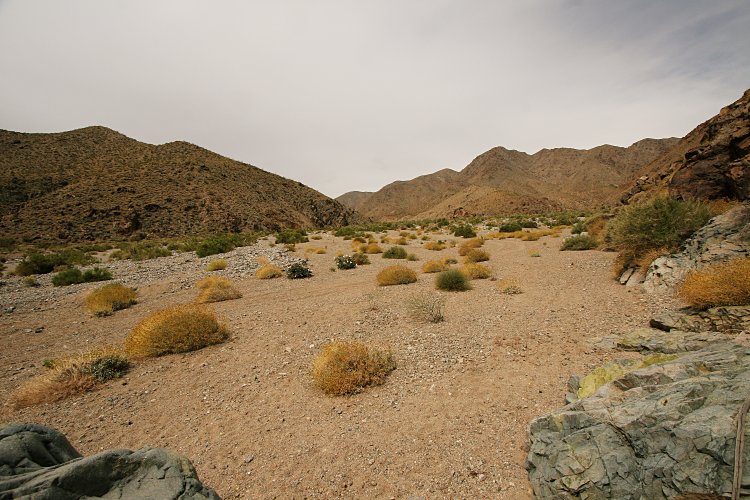
A canyon in the southern Argus Mountains.
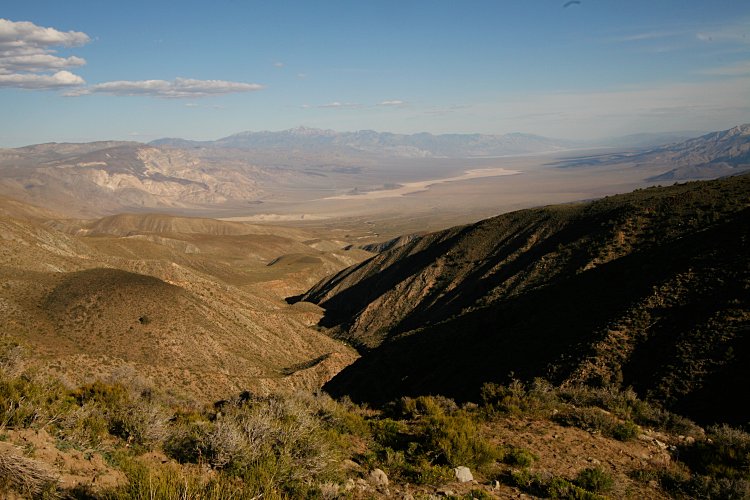
Looking south at the Panamint Valley.
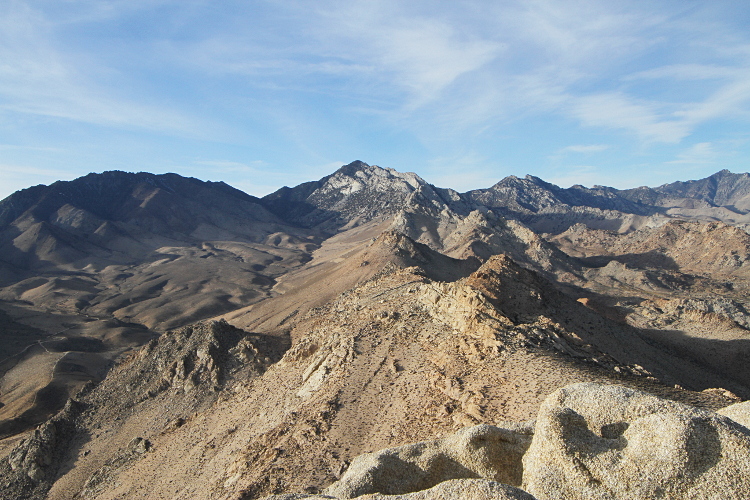
Looking west at Owens Peak from the top of Five Fingers.
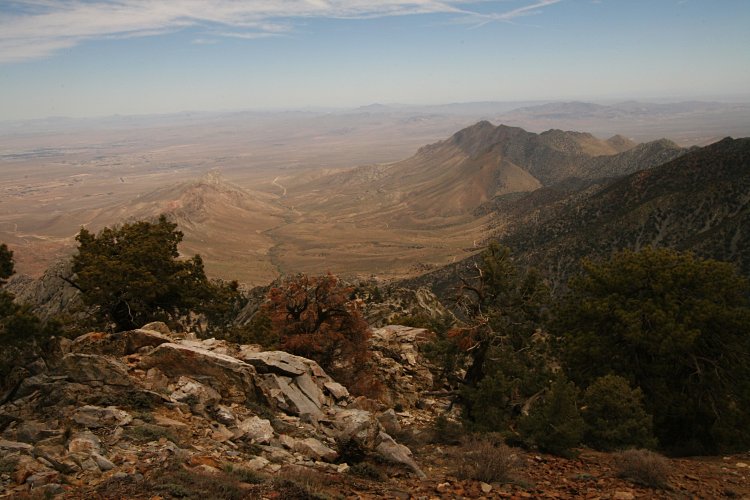
Looking down Indian Wells Canyon from the top of Owens Peak.
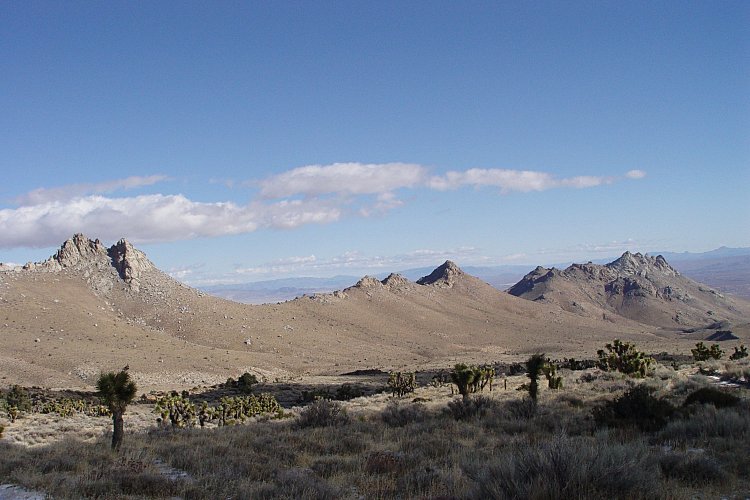
Indian Wells Canyon.
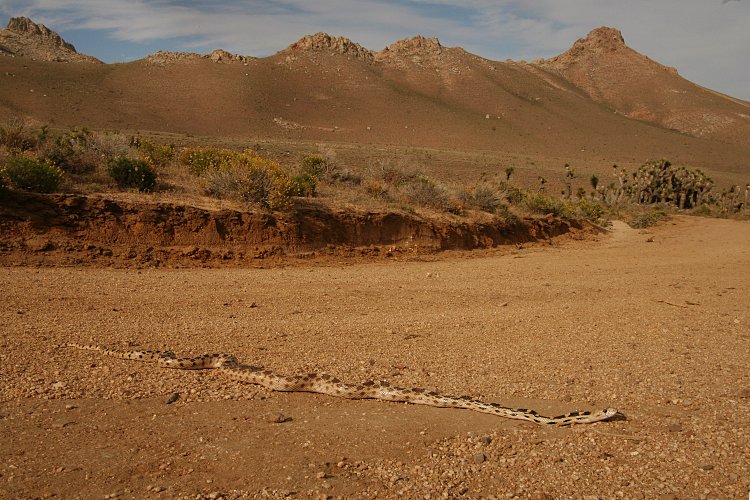
Indian Wells Canyon.
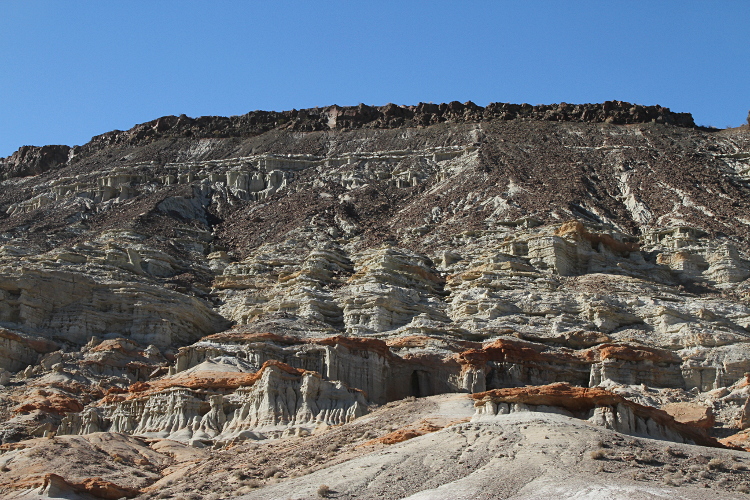
Red Rock Canyon.

Looking out at the Indian Wells Valley and southern Sierras from high in
the El Pasos.
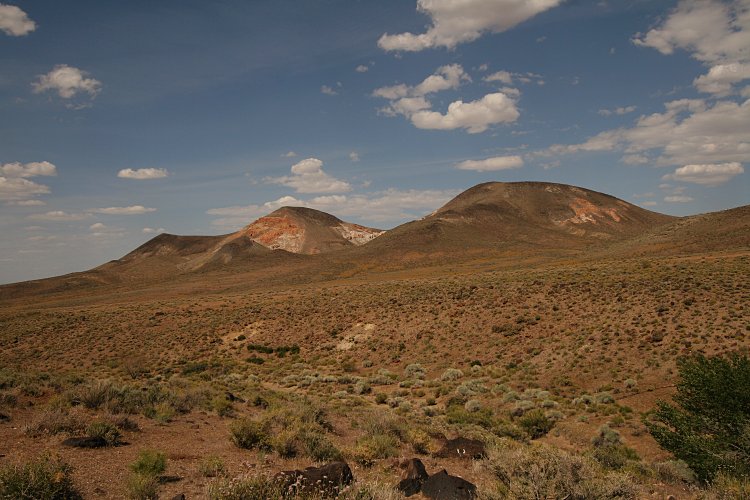
The Sheep Spring area in the El Pasos.
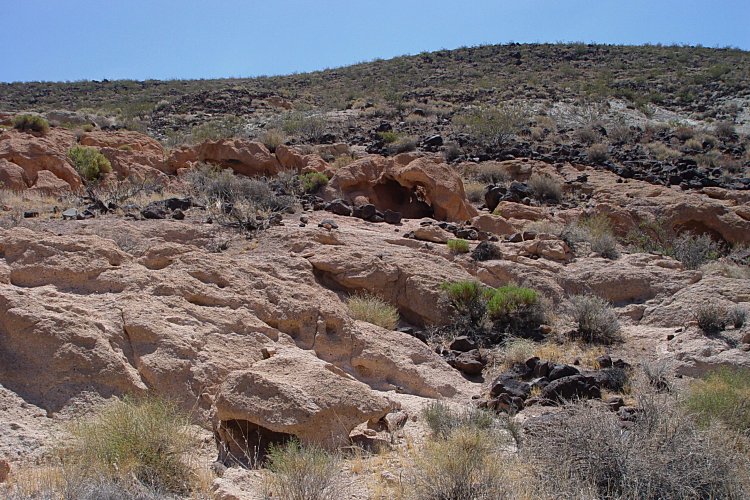
A hillside in the El Pasos.
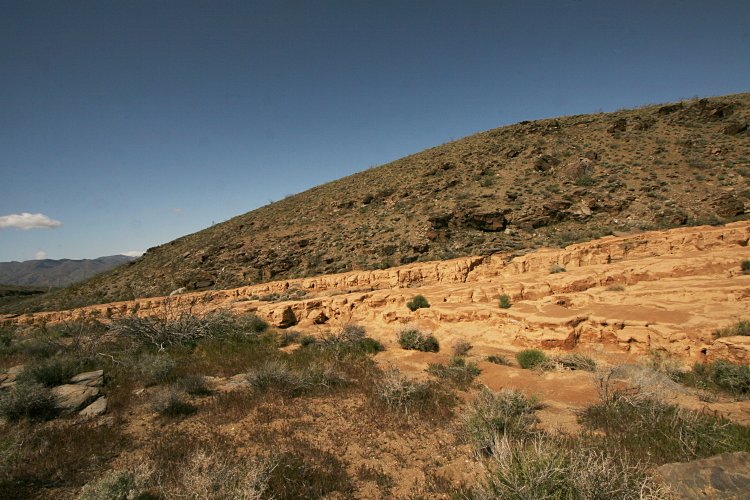
A gulch in the Rand Mountains.
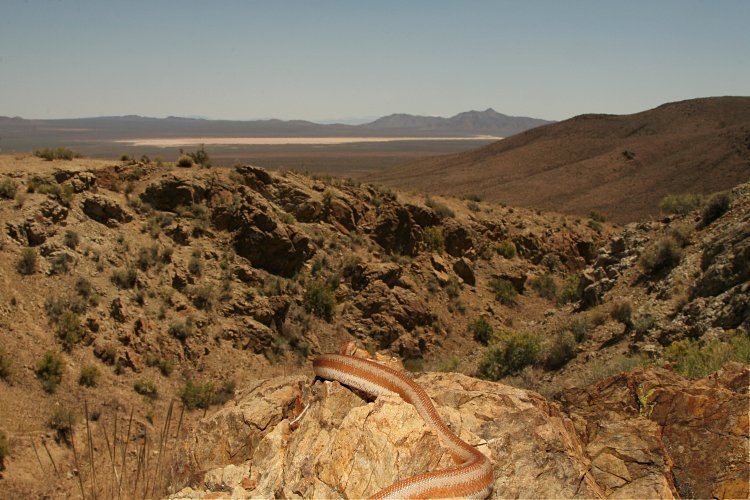
Looking out at Cuddeback Dry Lake from the Lava Mountains.
That's all folks!
























































































